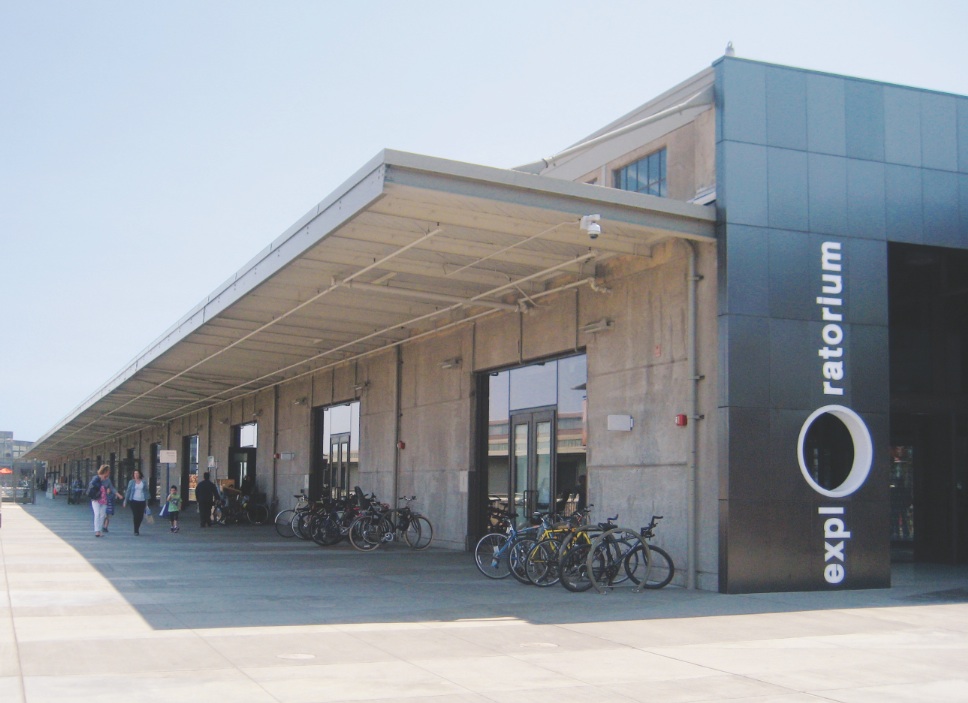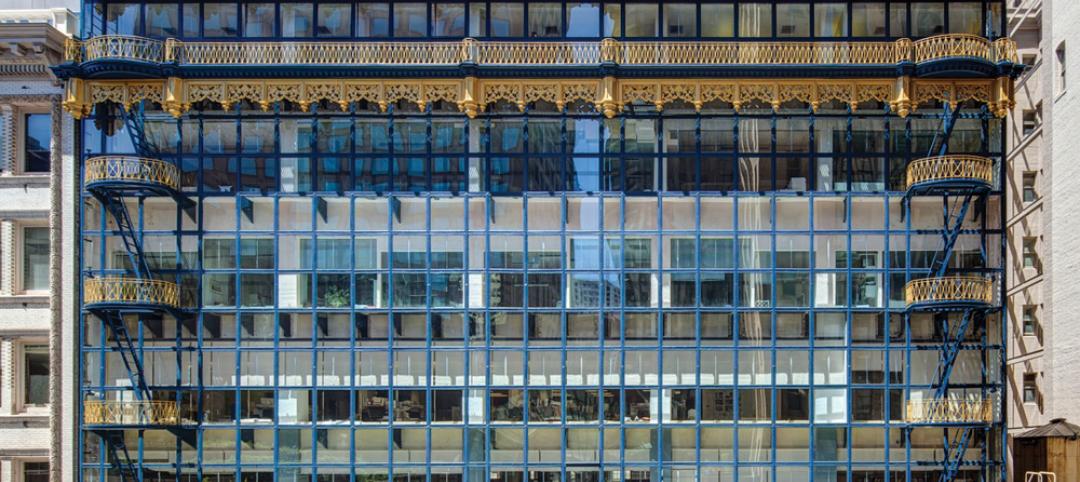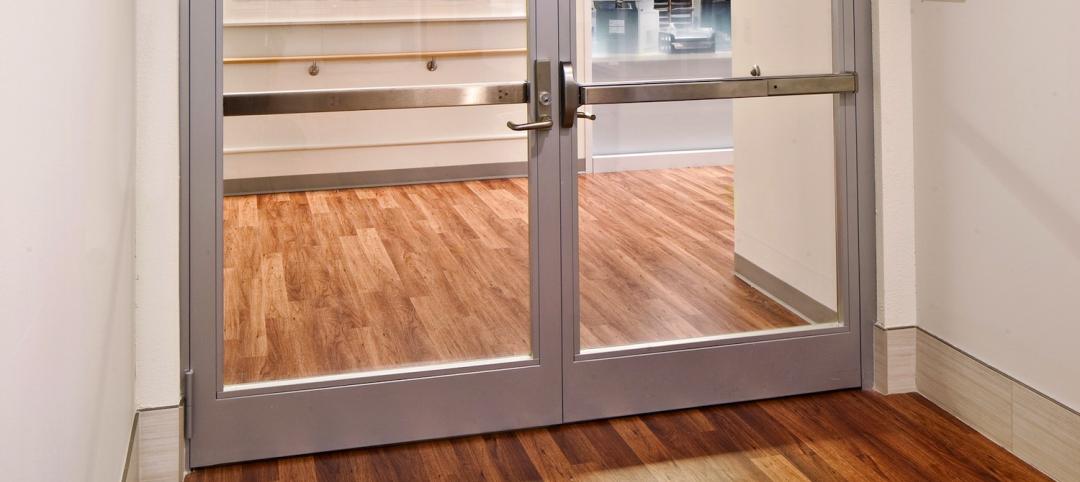Editor's note: This is a sponsored article. All text and images were provided by the sponsor company.
Project name: The Exploratorium in San Francisco
Architect: EHDD
General Contractor: Nibbi Brothers General Contractors
Glazing Contractor: Architectural Glass and Aluminum
Products used: SuperLite II-XL 45 IGU in SAFTIfire HM Framing
The newly-opened Exploratorium has brought energy and excitement to the city’s bustling waterfront. EHDD transformed the historic Pier 15, built in 1915, to a 330,000 square foot indoor and outdoor campus, being touted as the largest net-zero building in the city and potentially the largest net-zero museum in the world.
EHDD kept the original structure and concrete cladding of the building but removed most of the loading dock doors on the north and south sides of the pier, replacing them with glazed door assemblies in order to bring in natural light and provide convenient access between the inside space and the outdoor exhibits. By using glass, the architects were also able to make a connection to the outdoors, with the south side offering views of the Bay Bridge and north side offering views of the San Francisco skyline – putting the city itself and its iconic landmarks on display.
However, the location of the Exploratorium’s new home posed a unique challenge. “The exterior portions of the piers are designed to function similar to rated interior egress corridors in the event of a fire,” says Katherine Miller, the project architect for the Exploratorium. Not wanting to sacrifice daylight and views, the designers opted to use fire rated glass for the exterior doors so that people evacuating the site via the piers will be protected in case a fire breaks out from inside the building.
SAFTI FIRST supplied a total of 19 pairs of 45-minute steel doors – 11 pairs on north side and 8 pairs on the south side – using SuperLite II-XL 45 IGU in SAFTIfire HM Framing. The SuperLite II-XL 45 glazing was insulated with tempered low-e glazing on the #2 surface for energy efficiency. The frames were painted to match the adjacent non-rated systems.
8 pairs of SuperLite II-XL 45 IGU in HM Door Framing on the south side provides easy access to the outdoor exhibits and views of the Bay Bridge.
SuperLite II-XL 45 is a clear, fire resistive glazing product tested to ASTM E-119/NFPA 251/UL 263 with hose stream and meets NFPA 252/257 for use in door and window assemblies. It meets CPSC Cat. II impact safety and is available in large sizes, which was critical because some of the doors had a day light opening of 97 inches high.
“SAFTI FIRST was able to achieve the desired glass heights, and was less expensive than other options,” adds Katherine. SuperLite II-XL 45 has the largest sizes for clear 45 minute fire and safety rated glazing, with a maximum clear view area of 4,952 square inches and a maximum clear view height or width 124 inches. It is made here in the USA at SAFTI FIRST’s manufacturing facility in California, ensuring competitive pricing versus fire resistive multilaminates or fire protective filmed or laminated ceramics, which are either imported from Europe of Asia.
Aside from large sizes and competitive pricing, SuperLite II-XL 45 was chosen because “it was a good color match to the adjacent clear low-e coated glass,” says Katherine. SuperLite II-XL 45 has superior optical clarity and does not have any amber tints typically seen in fire rated ceramics.
Further expansion is planned for the neighboring Pier 17. For now, inquisitive minds of any age can satisfy their curiosities at the Exploratorium’s new spectacular – and safe – space along the embarcadero.
Related Stories
| Dec 10, 2013
16 great solutions for architects, engineers, and contractors
From a crowd-funded smart shovel to a why-didn’t-someone-do-this-sooner scheme for managing traffic in public restrooms, these ideas are noteworthy for creative problem-solving. Here are some of the most intriguing innovations the BD+C community has brought to our attention this year.
| Oct 15, 2013
Sustainable design trends in windows, doors and door hardware [AIA course]
Architects and fenestration experts are looking for windows and doors for their projects that emphasize speed to the project site, a fair price, resilient and sustainable performance, and no callbacks.
| Oct 7, 2013
Nation's first glass curtain wall exterior restored in San Francisco
The Hallidie Building's glass-and-steel skin is generally recognized as the forerunner of today’s curtain wall facilities.
| Sep 26, 2013
Literature review affirms benefits of daylighting, architectural glazing
The use of glass as a building material positively impacts learning, healing, productivity and well-being, according to a white paper published by Guardian Industries and the University of Michigan Taubman College of Architecture and Urban Planning. The findings highlight the significant influence daylighting and outside views have on employees, workers, students, consumers and patients.
| Sep 19, 2013
6 emerging energy-management glazing technologies
Phase-change materials, electrochromic glass, and building-integrated PVs are among the breakthrough glazing technologies that are taking energy performance to a new level.
| Sep 9, 2013
Top 25 continuing education courses on BDCuniversity
An overview of the 25 most popular continuing education courses on BDCuniversity.com.
| Aug 22, 2013
Energy-efficient glazing technology [AIA Course]
This course discuses the latest technological advances in glazing, which make possible ever more efficient enclosures with ever greater glazed area.
| Jul 23, 2013
Clearly Protective: Glazing for Life Safety at Seidman Cancer Center
Design team turns to fire-rated glazing for interior doors to give access to natural light, patient privacy and clear wayfinding throughout the building.
| Jul 12, 2013
Statue of Liberty Monument bolstered by Vetrotech Saint-Gobain’s fire-rated glass
The Statue of Liberty National Monument reopened to the public featuring two new fire stairwells and an elevator that will allow visitors with reduced mobility to look into the Statue’s interior structure.
High-rise Construction | Jul 9, 2013
5 innovations in high-rise building design
KONE's carbon-fiber hoisting technology and the Broad Group's prefab construction process are among the breakthroughs named 2013 Innovation Award winners by the Council on Tall Buildings and Urban Habitat.

















